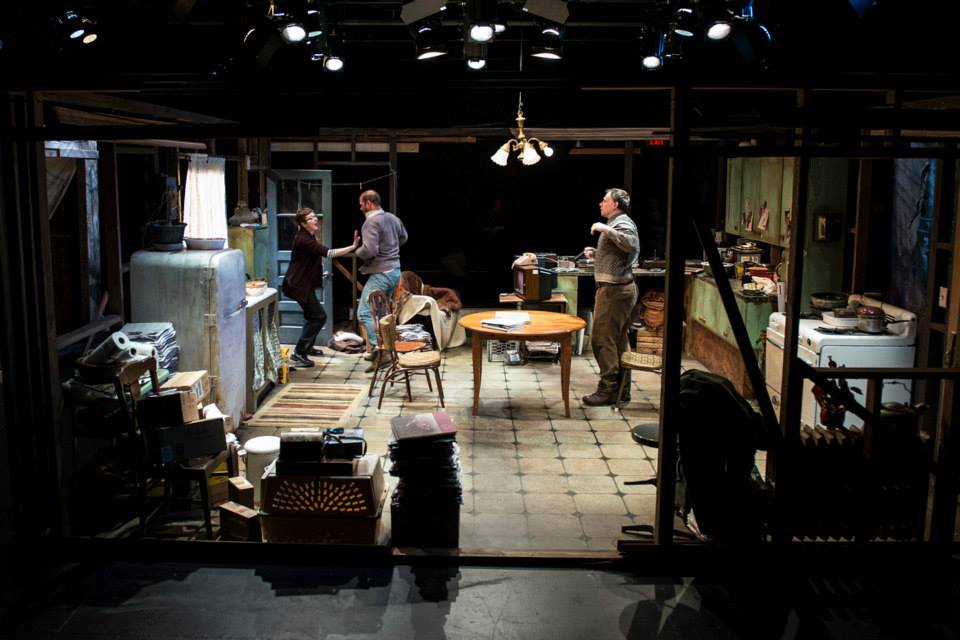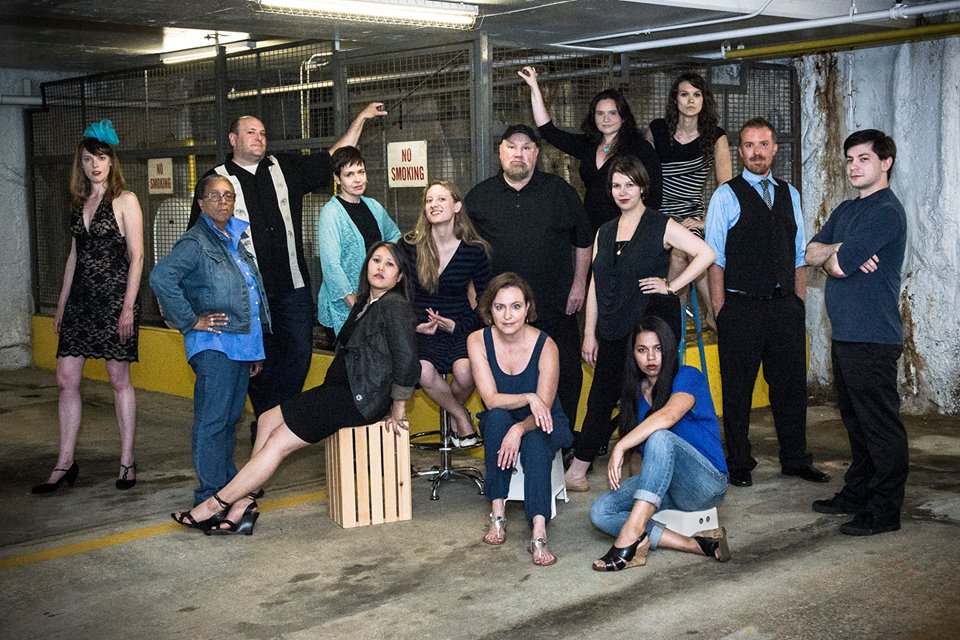WASHINGTON, D.C.: Most people would be petrified at the prospect of losing their job. But Jojo Ruf, the executive and creative director of playwrights ensemble the Welders, is positively excited.
“Maybe I’ll be able to sleep!” Ruf says with a laugh. In addition to overseeing the financial health of the Welders, Ruf also holds down a full-time position at the Laboratory for Global Performance and Politics and a post as coordinating producer of the D.C.-area Women’s Voices Theater Festival. But she’s known about her imminent departure from the Welders for a while—in fact, ever since she took the job.
“From the very beginning, when we first founded the Welders, the idea was that at the end of our three years, we would pass it on to a new group of playwrights,” she explains.
Artistic term limits were built into the creation of the Welders in 2013. The idea emerged from a “legendary” e-mail session among D.C.–area playwrights Renee Calarco, Allyson Currin, and Gwydion Suilebhan; their three-way chat lasted six hours and ended at 2 a.m. What eventually grew from it was a six-member group modeled after such playwright-driven ensembles as 13P and Workhaus Collective. The impulse simple: Instead of waiting for a theatre company to agree to a production, playwrights would band together to self-produce and have creative control over their individual projects. The original group contained five mid-career playwrights—Suilebhan, Calarco, Currin, Bob Bartlett, and Caleen Sinnette Jennings—and one administrator to oversee the day-to-day operations and act as a dramaturg.
But, while 13P famously ended (“implosion” is the term they preferred) after their allotted 13 playwright-driven productions, the Welders were constructed to last, but change: Every three years, one group of Welders will pass on the entire platform—website, bank account, donors—to a new group. And now the first changing of the guard is scheduled to happen: The new group, dubbed Welders 2.0, will be given an escrow fund that will contain $3,000, made up of the previous years’ surpluses plus individual donations.
“When we built the thing in the first place, we constructed it to evolve,” says Suilebhan. “Too many institutions exist to keep doing the same thing they’re already doing, thus they don’t adapt to changing ecological conditions. We wanted to build adaptability into what we were doing.”
So, after the final Welders production in 2016, the torch—which is more than just a metaphor, as a literal welding torch was purchased on Amazon—will be handed to Welders 2.0. The members of the new group are younger and more emerging than the original Welders and encompass a number of theatrical disciplines: In addition to playwrights Brett Abelman, Alexandra Petri, and Stephen Spotswood, Welders 2.0 include director and dramaturg Annalisa Dias, dramaturg Hannah Hessel Ratner, devising artist Rachel Hynes, and theatre deviser/costume designer Deb Sivigny. Ronee Penoi, a former producer-in-residence at Woolly Mammoth Theatre Company, will take over Ruf’s job.
“It’s kind of amazing—we’re getting a 501(c)(3) organization handed to us,” Dias marvels. “Like, what? That never happens!”
The application process to be a Welders 2.0 started last year. Prospective Welders were asked to apply as part of a group, to mimic the construction of many ensembles, which usually begin as a bunch of friends who want to make work together. When Dias and her group applied, they proposed a Welders 2.0 that was more than just a group dedicated to producing plays by playwrights. They also wanted to produce work that could start with the creative impulse of a designer or a director.
“I’m a director and deviser,” says Dias. “What does it mean for a director to be a generative artist? I don’t know if there are a lot of visible structures in place to have those conversations. We’ve put a lot of focus in the last 10 to 20 years on developing the playwright as a generative artist, but we don’t have a lot of national support for developing directors and designers as generative artists. I think this group is positioned to really start pushing those conversations forward.”

Under Welders 2.0, similar to the original Welders model, each artist will become the artistic director of the company when it’s time to mount their projects—whether it’s a production, workshop, or a multidisciplinary performance piece—with support from the other artists in the ensemble. Under the present plan, each Welder is given $25,000 to support their play; the company’s current annual budget ranges from $75,000 to $80,000, depending on the number of shows in the season. So far the company has produced world premieres by Currin (The Carolina Layaway Grail), Jennings (Not Enuf Lifetimes), and Bartlett (happiness (and other reasons to die)). In September, Calarco will present a workshop of a site-specific show, Our National Museum of the Unforeseen Tragedy, and next year, to close out the first iteration of the Welders, Suilebhan will present an untitled work which he describes as an “immersive, participatory performance essay, which will be largely devised.”
That’s still a year away, so Ruf isn’t losing her job just yet; she still has plenty of time to train her replacement. But she doesn’t expect Penoi—or any other of the rest of the Welders 2.0 crew—to mimic the old group.
“It’s going to be their organization; they can do what they want with it!” she says with a laugh. It’s bittersweet to think about letting go, she admits. It’s also invigorating.
“That’s the greatest thing: We’re bringing in eight new artists, and they’ll change, and morph and evolve. It’ll be their own version of the Welders. Thirty years down the road, we’ll have 10 iterations, and the organization will be different because of the people.”


